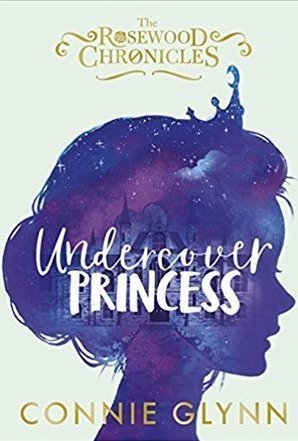Sophia (Bookwyrming Thoughts) (530 KP) rated Daughter of Isis (Descendants of Isis #1) in Books
Jan 23, 2020
The first book in Kelsey Ketch's <em>Descendants of Isis</em> series is a book with very heavy romance.
Of course, I was highly aware of that upon reading the synopsis.
But I'm an absolute sucker for mythology of all kinds (This is why I am highly interested in debut author Heidi Helig's <em>The Girl From Everywhere</em>. I mean, <em>Hawaiian</em>. Saucer eyes RIGHT here! I intend on waiting until the book is published, though.) and I simply couldn't resist myself. So instead of moping about the possibility of a heavy romance, I replaced my "NUUU ROMANCE" hat with my "TOLERABLE ROMANTIC" hat (the caps are intentional), sat back with my tablet (after transferring the review copy from the computer), and just hoped Ketch would take me on an unforgettable journey.
Natti has just moved from London to a small town in California after her Grandmother's death, with her only clue in a necklace she inherited. Since the first day Natti starts at her new school, Seth O'Keefe starts pursuing her in the hopes of seducing her.
Plus, Tolerable Romantic (I'll stop capping my hats now) hat says it's not exactly love at first sight Natti is completely resistant to Seth's attempts at charming her from the beginning, even though she sort of succumbs to his charms eventually. At that point in time, however, I know each of the characters well enough and have a particular fondness for each of them (for the first in a series) that it isn't awkward at all.
Ketch writes the book in two views: Natti's and Seth's. Natti's comparison of British life to American life and big city to a small town is mildly hilarious (we totally do everything backward). Even though she would rather remain in England, she smoothly transitions into her new life after meeting Wanda, Kevin, and Jen and being tucked under their wings.
Also, she has a fire in her I kind of like.
I honestly feel having Seth's view works out in the book's favor; hearing from his point of view makes him a lot more human than he comes out as with the other Sons of Set: someone who worships the Egyptian god Set and spreads chaos in the world on his behalf, hoping to eventually come across a secret from the past. They also sound insane and just want to take over the world one woman at a time.
It basically puts him in an entirely different perspective for readers than simply reading what Natti thinks of him.
<div class="separator" style="clear: both; text-align: center;"><a style="margin-left: 1em; margin-right: 1em;" href="http://3.bp.blogspot.com/-kFwoMM-NvD4/VodHIVFyhoI/AAAAAAAAFqQ/y-lTjSgr4j0/s1600/perspective.gif"><img src="http://bookwyrmingthoughts.bookblog.io/wp-content/uploads/sites/317/2016/01/perspective.gif"; width="320" height="240" border="0" /></a></div>
<em>Daughter of Isis</em> is one of those books where I'll probably keep my Tolerable Romantic hat on for the entire series because the romance between Seth and Natti fits the story really well. The world Kelsey builds in a small town California where nearly everyone is under the thumb of the Sons of Set captivated me by the end of the book I can't wait to see what trials the couple will face in the future of the series.
<a href="https://bookwyrmingthoughts.com/review-daughter-of-isis-by-kelsey-ketc/"; target="_blank">This review was originally posted on Bookwyrming Thoughts</a>
Ivana A. | Diary of Difference (1171 KP) rated The Undercover Princess in Books
Feb 3, 2020
<b>Rosewood Chronicles</b>
#1 <a href="https://www.goodreads.com/review/show/2598018490">Undercover Princess</a> - ★★★★★
#2 <a href="https://www.goodreads.com/review/show/2761943995">Princess in Practice</a> - ★★★★
<img src="https://diaryofdifference.com/wp-content/uploads/2019/04/New-blog-banner-12.png"/>;
<i>I am lucky to have the best sister ever, who keeps giving me books I love! She gave me Undercover Princess for my birthday back in November last year, and I finally managed to get to it. Thank you, sis!</i>
Even though Undercover Princess has great resemblance to The Princess Diaries and The Princess Protection Program, this book is unique in its own way, and the story is very different and positively surprising. I was in love with the characters and loved this book a lot. I will definitely be reading the second book of the series!
The story focuses on two main characters:
<b><i>* Lottie Pumpkin - the ordinary girl
* Ellie Wolf - the princess</i></b>
And I wish it was all so easy. But you see, Lottie is an ordinary girl, she grew up in England and her mother passed away when she was little. Before she passes away, she gives Lottie a tiara for her birthday and makes her promise that she will always be brave. Lottie’s only goal in life is to attend Rosewood Hall, no matter what. And she makes it, with a scholarship.
On the other side, we have Ellie, the princess of Maradova. All she ever wants to be is ordinary, but she is surrounded by servants and shiny items. She wants to go to Rosewood Hall, only to avoid all her royal duties. And the only way of her parents letting this happen is if she attends the college undercover.
Then we have these two girls being roommates. A rumour spreads around the school and everyone thinks that Lottie is the princess. And in this whole mystery, the real princess is in danger, but no one must know that the real princess is Ellie. <b>And this is only the beginning.</b>
The story is full of adventures and hilarious scenes, where we see Lottie and Ellie building their friendship, and trying to figure out the mystery behind all the threats they are receiving, all while they attend classes and go to parties like ordinary college girls.
While they play this game of swapping identities, they realise that this is more than a game, it is a lifestyle. And if Lottie is the undercover princess, she has to do everything to protect the real princess and her identity. Is this what she really wants? Is their friendship worth it?
There was a LGBT reference with a couple in this book, and maybe it was me, but I could also see a few sparks between Lottie and Ellie. I honestly expected something to happen between Lottie and Ellie's bodyguard. There were sparks though, so perhaps in the next book?
I loved how the partially-romantic scenes were building up to the real moment and made me want to read more. The writing skills this author has is truly amazing, and I praise her for it. It was a pleasure to read each chapter.
<a href="https://diaryofdifference.com/">Blog</a>; | <a href="https://www.facebook.com/diaryofdifference/">Facebook</a>; | <a href="https://twitter.com/DiaryDifference">Twitter</a>; | <a href="https://www.instagram.com/diaryofdifference/">Instagram</a>; | <a href="https://www.pinterest.co.uk/diaryofdifference/pins/">Pinterest</a>;

TextMe Up - 2nd Phone Number
Productivity and Social Networking
App
ONE APP & MULTIPLE NUMBERS Use your phone like your email with TextMe Up’s smart numbers. Add as...
Darren (1599 KP) rated Obey (2018) in Movies
Aug 30, 2019
Story: Obey starts as we meet Leon (Rutherford) a 19-year-old man living in London, he doesn’t have the education, he spends most of his time getting high and drinking with friends, while causing trouble with other gangs, Leon does train in boxing and is starting to wonder what his life is meant to be.
As the violence in the surrounding neighbourhood, Leon starts to question everything more, as he sees his friends acting out causing bigger problems, while he homelife isn’t getting any better with his alcoholic mother, stopping him from getting a chance to improve himself and the woman he meets Twiggy (Clark) only gives him mixed messages.
Thoughts on Obey
Characters – Leon is the 19-year-old man that was raised in the London, where he has become part of a gang, didn’t get a chance at an education and is left facing a life of uncertainty. Leon is feeling like life is going no where now and he wants to do something about it, this could see him go back into education or continue his training in boxing, but the reality comes with him that he just doesn’t want to get involved in criminal actions going on within London, it is a make or break time for the young man, that we completely understand his position in life. Twiggy is the woman that Leon meets, she has been squatting in London with her boyfriend, though she is a free spirit that isn’t looking for trouble, which makes her different to everybody else in Leon’s life. Anton is her boyfriend that we don’t learn to much about other than he is happy to hang out with whoever and fights for rights. We do get to meet most of the gang Leon is in, though the names are easy to forget, they represent a life of crime he could fall into, Leon’s alcoholic mother and her abusive boyfriend, each character does seem to reflect a life Leon could have.
Performances – Marcus Rutherford easily gives us a standout performance in this film, he will make you understand every single situation his character is going through, which is a delight to watch. Sophie Kennedy Clark is everything she needs to be, with the whole supporting cast making you feel like you are part of this world that Leon is living through.
Story – The story here follows a young man who grew up in London as part of a gang, who isn’t given a chance of a future, until he meets a stranger and is left to decide what he wants for his own future. This story is a true eye opener when it comes to showing us how the gang situation happens, is treated and how hopeless somebody could be if they are trapped within it. We do only follow one person, who is given a few outs, through support, a woman, but is also held back by his lack of education, his gang friends and caring for his addict mother. This does show us how hard the life can be, how the mentality can see the person making the wrong decisions, how the outsiders can see them as wrong, rather than not given a chance. This is an important story for the people of England to see and one that could open up more eyes to what the problems really are, not what they think they are.
Settings – The film is set in London, this does show us just how difficult the life would be for Leon and other young people in this location, if they haven’t been given a chance.
Scene of the Movie – The journey.
That Moment That Annoyed Me – Not enough development of the supporting characters.
Final Thoughts – This is one of the most important eye openers in the world of film, it doesn’t glorify anything, just keeps it feeling realistic throughout the film.
Overall: Important drama.

iFootpath - Digital Walking Guides
Travel and Navigation
App
Modern Walking Guides in the Palm of Your Hand "Great app - been looking for a good walking route...

Lloyds Bank Mobile Banking
Finance and Business
App
When it’s hard to find a moment to do those small but important things, our Mobile Banking app is...

Sugar Daddy Gay Dating For Sugar Daddy, Sugar Baby
Social Networking
App
GDaddy is the world’s FIRST and LARGEST gay dating app for gay sugar daddies, gay sugar babies. It...
Bob Mann (459 KP) rated Greyhound (2020) in Movies
Aug 9, 2020
The battle of the Atlantic, which ran from 1939 to the end of the war, was a key battleground of World War 2. Failure to supply the European battlefront with fresh supplies and troops from the States would spell certain failure. (The wiki page addressing this is here.) But it's a field of combat that has been relatively overlooked at the movies. Of the handful of feature films, the most famous are that famously stiff-upper-lipped British offering "The Cruel Sea" from 1953 and Wolfgang Petersen's original 1981 U-boat film, "Das Boot", seeing it from the German's side.
Here, the subject gets the full Tom Hanks treatment. Not only does he star in the movie, but he also wrote it, based on the C.S. Forester novel "The Good Shepherd".
We join Captain Krause (Tom Hanks, with a strangely German-sounding name!) on dry land awaiting his beloved Evelyn (Elizabeth Shue) for a proposal. But that's the last dry land we see in the movie, since Krause is captaining the US destroyer "Greyhound" on its maiden voyage to protect a convoy of UK and US ships heading for England. But danger lurks beneath the waves as a pack of U-boats attempt to sink as many vessels as possible.
The issue with a movie about a war-time transatlantic crossing is that the ships are grey, the sky is grey and the sea is grey. It's a monochromatic and rather depressing context for a movie. To combat that, the CGI used to recreate the action needs to be good, and thankfully the film delivers in that department.
Where I had quibbles - and I'm not sure whether this was in Hank's original screenplay or the result of director Aaron Schneider's attempts at "added flair" - was in stopping the action mid-scene for a zoom up above the clouds to see the Aurora Borealis. Unnecessary and distracting.
Where the film really scores is in the tense action sequences. As a viewer, I found myself straining forwards in my seat for the "ping" of the sonar! The cat and mouse games being played out with the hidden foe are certainly well done.... albeit a colleague of mine refuses to watch it because "torpedoes don't bounce off the sides of ships" as shown in the trailer!
Perhaps what might have made the film richer still would have been the view from the German side. Another star name as the 'heard but never seen' mocking U-boat commander might have turned this into even more of a Shakespearean battle-royale.
Overall, this is an enthralling and enjoyable watch that I would recommend. Tom Hanks delivers YET another compelling captain role. It seems to be the rank that he naturally gravitates to.... having the gravitas to command, but not being too far removed from the common man. Here he is supported by the omnipresent Stephen Graham, also equally good.
It's a great shame that this never got the wide-screen cinematic release, because Greyhound deserved it. Who knows, perhaps with cinemas spasmodically opening up, there's still time for a national release. That would be good, and I'd certainly go and see it again on the big screen.
And, by the way, the answer to my trivia question is this film - Greyhound - and 1917. The reason being that in both movies the actresses named were the sole female players within the whole cast.
(For the full graphical review, please visit https://bob-the-movie-man.com/2020/08/01/one-manns-movies-film-review-greyhound-2020/ .)

Live Train Times UK - National Rail
Travel and Lifestyle
App
One of Sainsbury's Magazine's "20 Best Apps for Busy People"! Officially licensed and best...

AikidoGuide
Sports and Education
App
THE AIKIDO GUIDE is a powerful tool that fully utilizes app technology to give a unique learning...



